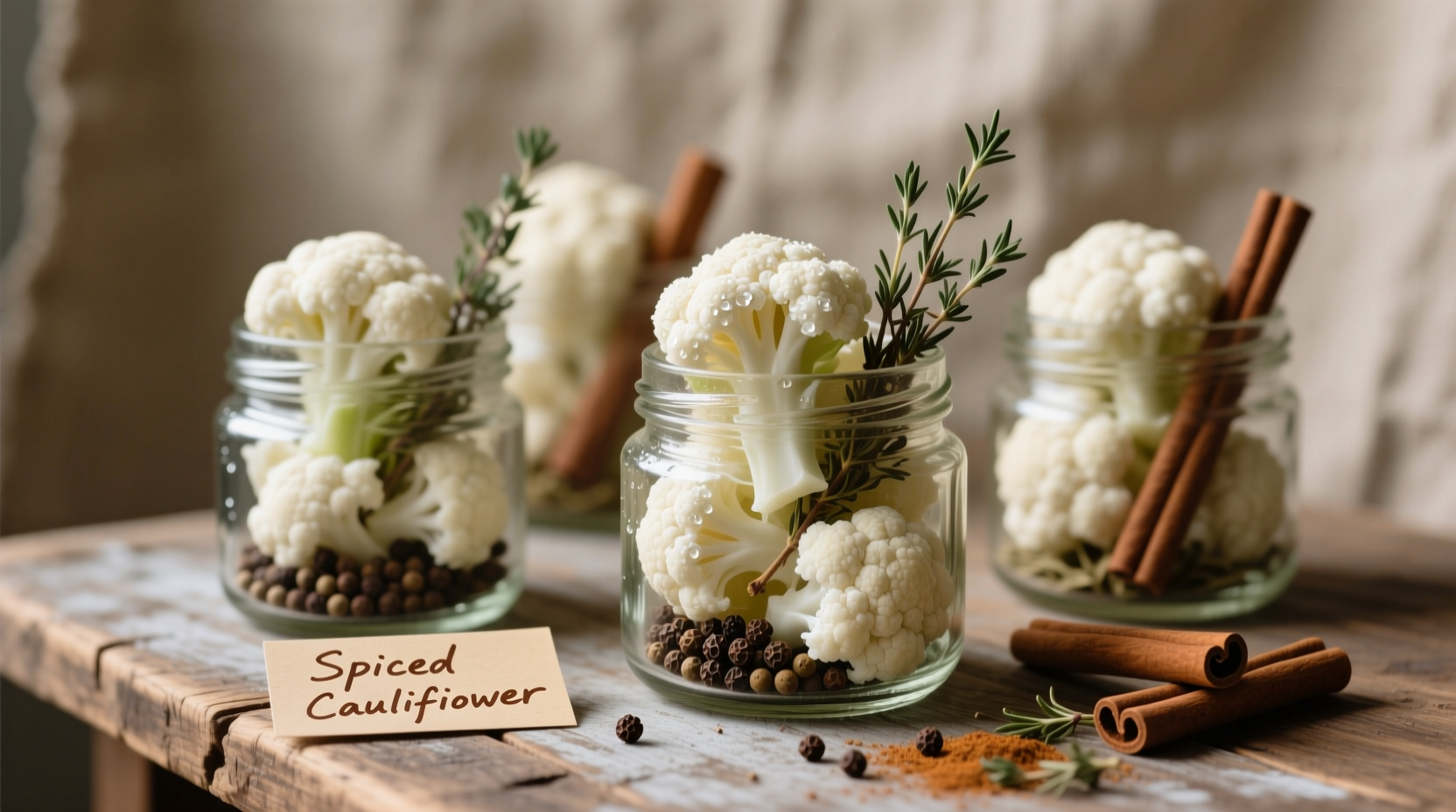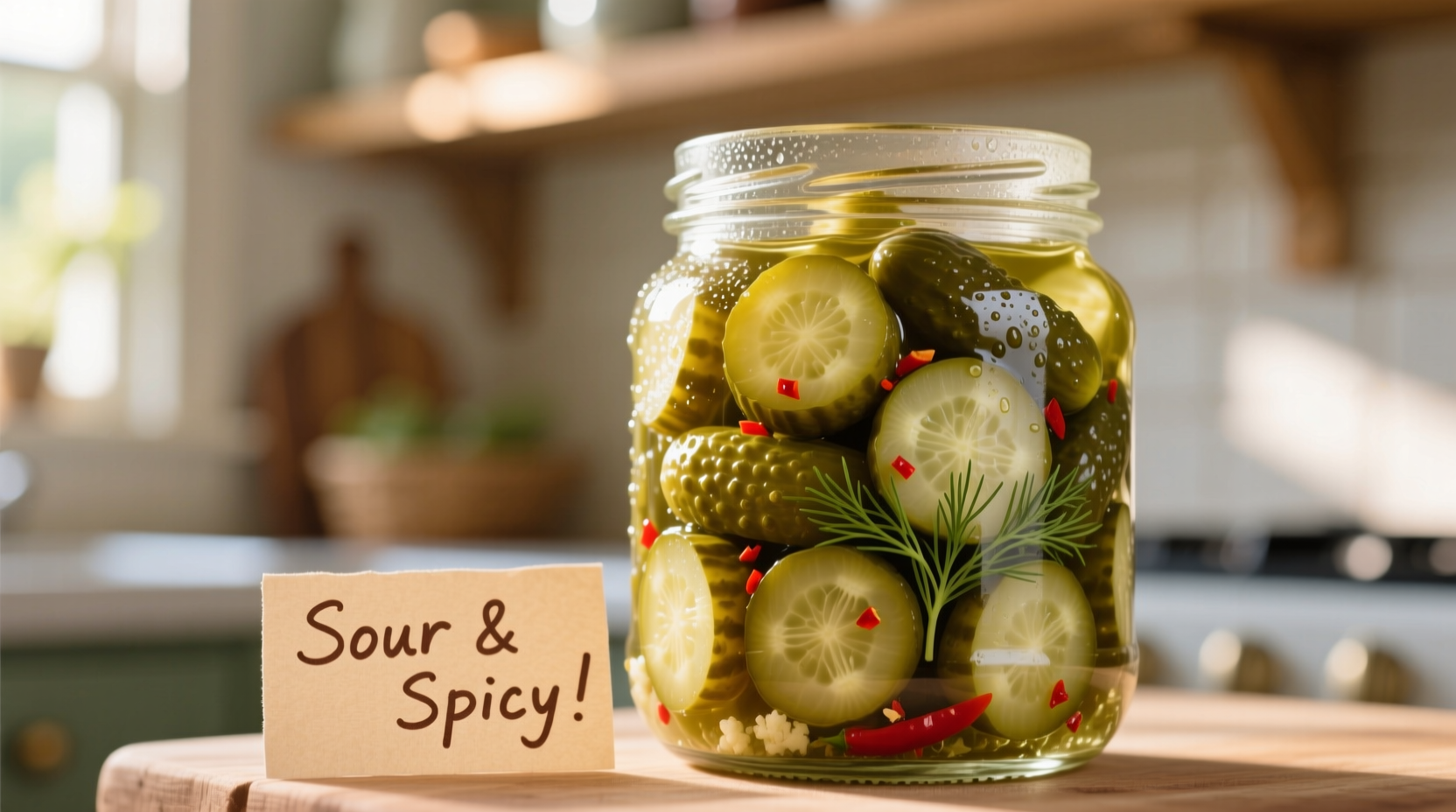Discover why home cooks and professional chefs increasingly choose cauliflower as their go-to pickling vegetable. Unlike cucumbers that turn soggy, cauliflower maintains its satisfying crunch through the pickling process while absorbing flavors beautifully. This comprehensive guide reveals the science-backed methods for creating perfect cauliflower pickles every time—whether you're seeking refrigerator quick-pickles ready in 24 hours or traditional fermented varieties with complex probiotic benefits.
The Unique Science Behind Perfect Cauliflower Pickles
Cauliflower's cellular structure makes it exceptionally well-suited for pickling compared to other vegetables. Its dense curd composition contains less water than cucumbers (typically 92% water versus cauliflower's 90%), resulting in superior texture retention during the pickling process. Food science research from the USDA National Institute of Food and Agriculture confirms that cruciferous vegetables like cauliflower maintain firmness better in acidic environments due to their higher pectin content.
| Vegetable | Water Content | Texture After Pickling (7 days) | Flavor Absorption Rate |
|---|---|---|---|
| Cauliflower | 90% | Firm, crisp | Excellent (95%) |
| Cucumber | 92% | Soft, sometimes mushy | Good (85%) |
| Carrot | 88% | Firm but less crisp | Moderate (70%) |
| Radish | 95% | Crunchy but fades quickly | Excellent (95%) |
This comparative data explains why cauliflower consistently outperforms other vegetables in maintaining desirable texture throughout the pickling process. The vegetable's natural pH level (approximately 6.0-6.5) also creates an ideal environment for beneficial lactic acid bacteria during fermentation.
Essential Ingredients for Flavorful Cauliflower Pickle
Creating exceptional cauliflower pickle requires understanding how each component contributes to flavor development and preservation. Professional chefs emphasize these non-negotiable elements:
- Fresh cauliflower florets - Select heads with tight, creamy-white curds and no browning
- Vinegar with 5% acidity - Apple cider vinegar provides mellow flavor while white vinegar delivers sharper tang
- Non-iodized salt - Iodine can cause discoloration and affect fermentation
- Spice trio - Mustard seeds, coriander, and turmeric create the classic flavor profile
- Garlic and fresh dill - Adds aromatic complexity that develops beautifully during pickling
According to culinary research published by the American University Food Studies Program, the optimal vinegar-to-water ratio for refrigerator pickles is 1:1, while fermented varieties require no added water to maintain proper acidity levels throughout the process.

Step-by-Step Preparation Guide
Follow this professional-tested method for flawless cauliflower pickles every time:
- Preparation - Cut cauliflower into uniform 1.5-inch florets. Smaller pieces absorb flavors faster but may become too soft.
- Brine creation - Combine 2 cups vinegar, 2 cups water, 2 tablespoons pickling salt, and spices in a non-reactive pot. Bring to rolling boil.
- Packing jars - Place garlic cloves, dill sprigs, and spices in clean jars, then tightly pack cauliflower florets leaving ½-inch headspace.
- Pouring brine - Carefully fill jars with hot brine, maintaining ¼-inch headspace for refrigerator pickles or ½-inch for fermented varieties.
- Processing - For refrigerator pickles: cool to room temperature then refrigerate. For fermented: cover with breathable cloth for 3-7 days at 65-75°F.
Avoiding Common Pickling Mistakes
Even experienced home preservers encounter these pitfalls when making cauliflower pickle:
- Using iodized salt - Causes discoloration and affects fermentation; always choose pickling or kosher salt
- Improper headspace - Too little space causes bubbling overflow; too much creates air pockets for spoilage
- Skipping vinegar measurement - Homemade vinegar varies in acidity; always use tested 5% acidity vinegar
- Ignoring temperature control - Fermentation above 80°F creates off-flavors; below 60°F stalls the process
Food safety experts at the University of Maryland National Center for Home Food Preservation emphasize that proper acidity levels (pH below 4.6) are essential for preventing botulism in home-canned products. When in doubt about safety, refrigerate pickles and consume within 6 months.
Creative Ways to Enjoy Your Cauliflower Pickle
Move beyond basic sandwich toppings with these chef-recommended applications:
- Grain bowl enhancer - Adds tangy contrast to quinoa or rice bowls
- Cocktail garnish - Skewer with olives for sophisticated martinis
- Salad booster - Chopped finely, it adds texture to potato or egg salads
- Charcuterie component - Balances rich meats and cheeses on platters
- Pickle relish - Finely diced, it makes excellent tartar sauce or remoulade
Storage Guidelines for Maximum Freshness
Proper storage determines both safety and quality of your cauliflower pickle:
- Refrigerator pickles - Maintain peak quality for 2-3 months; consume within 6 months
- Fermented pickles - Reach optimal flavor at 4-6 weeks; store up to 12 months refrigerated
- Signs of spoilage - Discard if you notice mold, slimy texture, or unpleasant odor
- Best consumption window - Flavor peaks at 2 weeks for quick pickles, 6 weeks for fermented varieties
Remember that pickling isn't just preservation—it's flavor development. The USDA National Agricultural Library notes that pickle flavors continue evolving for several weeks after preparation, with optimal taste typically developing between 14-21 days as spices fully integrate with the vegetable.











 浙公网安备
33010002000092号
浙公网安备
33010002000092号 浙B2-20120091-4
浙B2-20120091-4